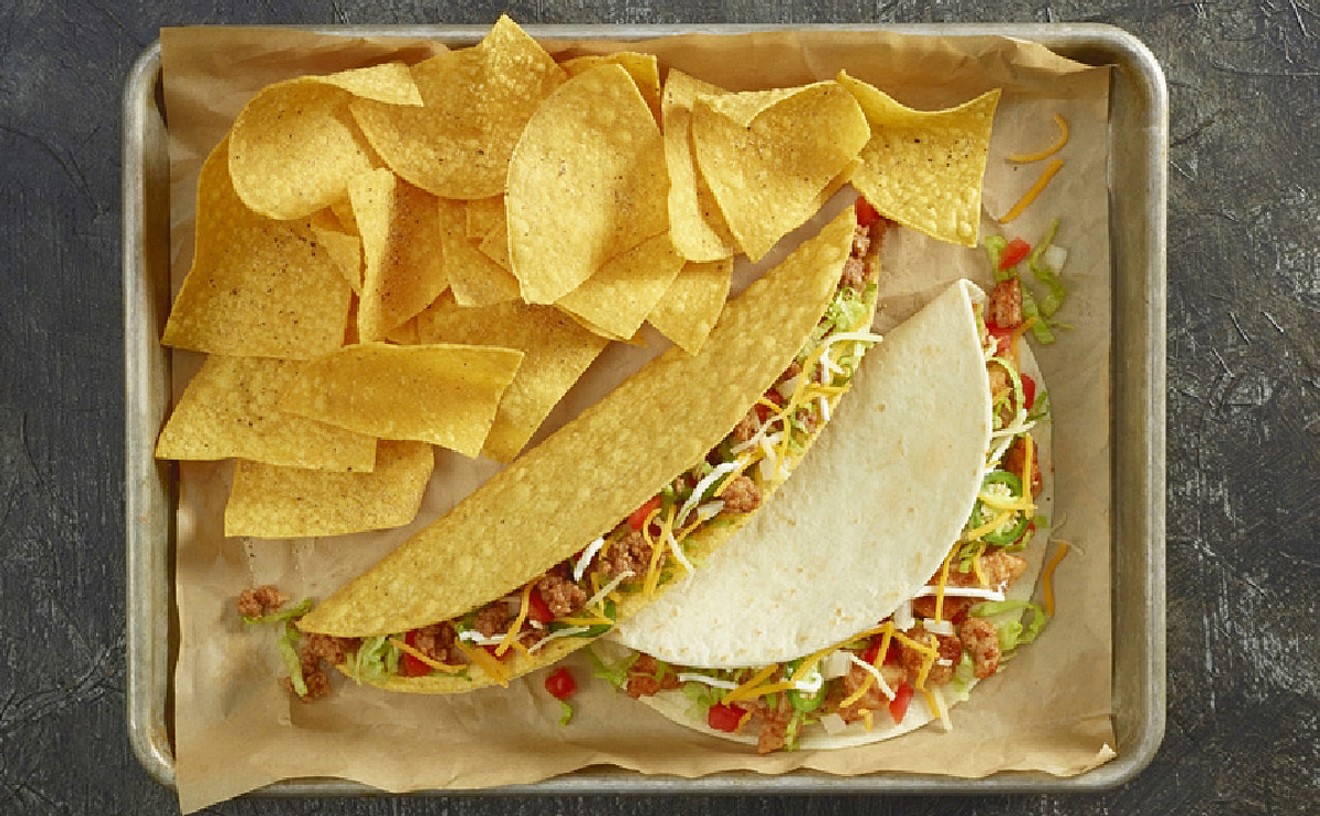There is often confusion concerning the boundaries between Mexican food, Tex-Mex, other-American-Mex, and all variations thereof. Do people in Mexico eat tacos in fried, U-shaped corn tortillas? Is chimichanga a silly American word for an Americanized Mex concoction, or a silly Mexican word for an actual dish from that country? Does chili con carne have authentic Mexican roots? Did the Taco Bell chihuahua respond more to commands spoken in Spanish or English?
Actually, we don't know the answer to that last one, but our crack research team has spent innumerable hours combing through the histories of both countries to determine what is Mex and what is Not Mex. Or at least that's more or less how we came up with this info. The important thing is that we've got it and are sharing it with you just in time for tomorrow's Cinco de Mayo celebrations -- a great American, er, Mexican, er, Mexican-but-celebrated-more-in-America holiday!
Mex or Not Mex?
Burritos
Mexicans have no doubt been rolling things up in tortillas for as long as they've had tortillas. But the word "burrito" first saw print in America in 1934, and was sold at the renowned El Cholo Spanish Cafe in Los Angeles during the 1930s. According to burrito researchers David Thomsen and Derek Wilson, the first modern burrito originated "in the dusty borderlands between Tucson and Los Angeles." It is believed the burrito spread to other parts of the Southwest during the 1950s and went nationwide a decade later.
Not Mex.
Chili con carne
Most people think of this bean-and-beef dish as being Tex-Mex, and indeed it did originate in San Antonio sometime after the Civil War. On the other hand, ancient Mayans and Aztecs were known to cook beans in spicy tomato sauce to similar effect. Perhaps the history is best summed up in Craig Clairborne's The New York Times Food Encyclopedia (1985): "Instinctively, one knows that chili originated in the Southwest, was of Mexican inspiration, and that it moved eastward to the southern states in the early part of the century."
Not Mex.
Chimichangas
John Mariani, in his Encyclopedia of Food and Drink (1999), describes chimichangas as "A deep-fried wheat tortilla stuffed with minced beef, potatoes, and seasonings. The term was long considered a nonsense word -- a Mexican version of "whatchamacallit" or "thingamajig" -- reputedly coined in the 1950s in Tucson, Arizona, although Diana Kennedy, in her Cuisines of Mexico (1972) reports that fried burrtios in Mexico are called by the similar name chimichangas...Tucson writer Janet Mitchell heard tales about the first chimichanga being created when a burro was accidentally knocked into a deep-fat fryer, and the cook exclaimed, 'Chimichanga!' She had also heard that a baked burro cooked in a bar in Nogales, Arizona in the 1940s had been called a toasted monkey..an allusion to the golden-brown color of a deep-fried burro.'"
Not Mex.
Enchiladas
An article in American Speech (magazine) in 1949 asserted that an enchilada was "a Mexican dish prepared more for turista than for local consumption." But enchiladas were mentioned in the first Mexican cookbook, El Cocinero Mexicano, published in 1831, and in Mariano Galvan Rivera's Diccionario de Cocina, published in 1845.
Mex.
Fajitas
This is an obvious one. According to Mariani, fajita is a Tex-Mex dish deriving from the Spanish faja -- "girdle" or "strip", which describes the cut of meat. The word "fajita" didn't appear in print until 1975. "In 1984 Homero Recio, a lecturer on animal science at Texas A & M University, obtained a fellowship to study the origins of the item, coming to the conclusion two years later that, ironically, it was his grandfather, a butcher from Premont, Texas, who may have been the first to use the term 'fajita' to describe the pieces of skirt steak cooked directly on mesquite coals for family dinners as far back as the 1930s."
Not Mex.
Quesadillas
According to The Tortilla Book, by Diana Kennedy (1975), "Quesadillas are one of the Mexicans' favorite simple snacks. They are, in fact, uncooked tortillas stuffed with one of various fillings and folded over to make a 'turnover' toasted on a hot griddle or fried until golden. In many parts of Mexico they are filled with strips of Chihuahua cheese, which melts and 'strings' nicely -- a Mexican requirement...the farther south one goes the more complicated they become."
Mex.
Tacos
We all know these are from Mexico; the fried, U-shaped, corn-based ones stuffed with ground beef are an Americanized version.
Mex.
Tamales
From Alan Davidson's Oxford Companion to Food: "Tamales...are an important feature of Mexican food and date back to pre-Colombian times." That's pretty straightforward.
Mex.
Follow Short Order on Facebook and Twitter @Short_Order.










